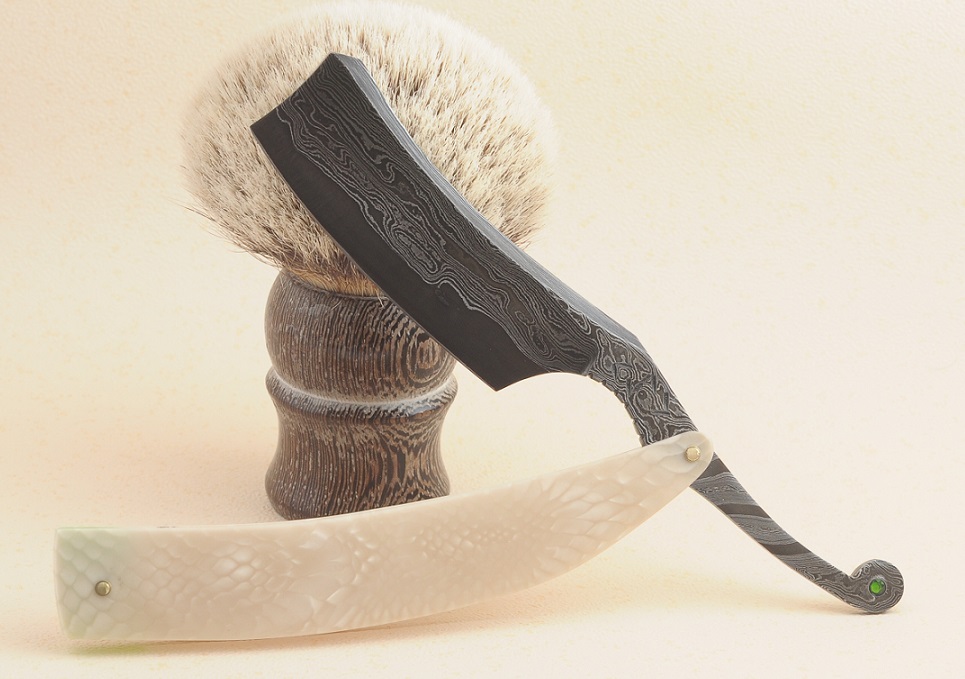-
Posts
129 -
Joined
-
Last visited
Profile Information
-
Gender
Male
-
Location
Laakdal - Belgium
-
Interests
Bladesmithing, Martial arts, Japanese language
Recent Profile Visitors
4,538 profile views
-
sfeile started following SnailForge
-

Getting credit where due??
SnailForge replied to VaughnT's topic in The Business Side of Blacksmithing
You have copyright so he is not allowed to make exact copies. That said fighting in court is more expensive than it is worth. How about telling him you claim copyright but allow him to make copies as long as your name or business card us included in the ad and with each sale? That would you you a lot more good than fighting over this for a few dollars -
That only works with knife nut users. Other than outside my niche with high end razors, no user I ever sold an entry level general purpose knife to was interested and most would not even know there are more types than 2: stainless or not. If you make entry level cost knives, I highly doubt that the user will care or be qualified to make a choice. What you're suggesting is a bit like a dentist asking general customers what drill they prefer. A dentistry afficionado would be able to give a meaningful answer but most customers just want to get their cavity filled
-

Damascus steel chefs knife wip (problem with etching)
SnailForge replied to Dustin Quade's topic in Knife Making
Typically you should not be able to see any grind marks or deep scratches after etching.- 24 replies
-
- etch probelm
- 1080 and 15n20
- (and 5 more)
-
keep in mind that commercial grade razor blades contain a lot of crud in terms of coating and alloying. It may make forge welding difficult or cause HT problems later on.
-

Damascus steel chefs knife wip (problem with etching)
SnailForge replied to Dustin Quade's topic in Knife Making
In terms of finish, I'd recommend doing the last couple of grit levels by hand. the finish will be much more smooth, and there will be no coarse grinding marks left. If you grind all the way on a belt sander, there is a very good chance that you will leave a lot of semi visible scratches and marks even at the higher grit level. If you have a smooth consistent finish before etching, the etching will come out much cleaner and nicer. In terms of geometry, I think perhaps the handle should come out at a more shallow angle- 24 replies
-
- etch probelm
- 1080 and 15n20
- (and 5 more)
-
Cryogenic nitrogen is also very good at creating terrible burns and scars. The OP mentions he has 'access to' which generally does not infer ownership or knowledge skill but merely technical access to. Without wanting to be dismissive: liquid nitrogen is dangerous, and requires knowledge and skill to use in heat treatment safely and with a chance of success. If you don't have the experience to be able to choose between different steels for an intended purpose, it's a fairly safe bet that liquid nitrogen will not improve matters at all. Stick to water and oil until you know what you are doing.
-
The obvious anser would be to pick the steel that is most suited to what you are trying to make.
-
The belt in that video was 220 grit. Personally I like to use 120 grit ceramic after HT but at the time I had the choice between 60 or 220. 220 worked but was a bit slow. SFM I don't know It wasn't my machine and it had no numeric setting just a turn dial. Fairly slow.I run my belt at only 10 % of full speed at that stage during hollow grinding and I'd say 2 bumps per second on a 72 " belt.
-
Last February I was in Texas in a gathering of razor makers. It was a place for people to get some insight in various aspects of razor making, and I was helping people make their first razor, explaining things and doing a couple of forging demos along with Howard Clark and Mike Blue. One of the things that came up was: how do I grind a razor the last bit of the way after heat treatment. There are many ways to do this, and I won't say that my way is best. This is just what I do and it works for me. One benefit it has over other methods is that I get very small bevels on my razors which can be a bit harder with other methods. I was the only one of the people there who ground edge down, and one of the science-y guys wanted to film this to make a tutorial and this is the result. One of the benefits this has is that the sparking and even more important the sound of grinding tells me just where I am in relation to the edge. It takes some practice to get good at this, but by looking at the sparks and listening to the sound I know exactly what is happening to the part of the blade I can't see.
-
That's one from Dylan Farnham. I've made a couple of fixed handle razors. They're easier to make than regular folding razors because the thing doesn't have to close dead center of the scales so there is more leeway for asymmetric error.
-
Thanks. I am essentially self taught when it comes to making them. I've been shaving with straights since I was a teen. A decade ago I became a member of straightrazorplace where I started learning to properly hone them, and how to shave properly, using a brush, using a leather belt to strop, etc. After a while I started taking apart vintage razors with mild damage to restore them, polish them clean using handsanding, etc. At the time I saw a razor made by Robert Williams who was (one of) the first to forge razors as a customs maker. It was a razor in Damascus with mammoth ivory scales. The model is almost identical to the one above in ivory. At the time I really REALLY wanted it but I couldn't afford it of course. And I thought: I like working on razors already. If I learn how to make them, I could eventually make it and own it without paying for it. It took almost a decade but I made that razor. In terms of manufacturing techniques, as I said I am essentially self taught but for anything about Steel and forging, Mike Blue has been my mentor for almost a decade now. His mentor was Howard Clark who has also became a personal friend of mine and whom I chat with regularly about metallurgy. I shaved with it once and then sold it because by then I had lost all interest in owning things and instead became obsessed by making things. I'll shave with them once to verify the quality of the edge, but that's it. The money is just for buying more steel and equipment and last year my plane tickets to the US to a gathering where I was invited to teach (it sounds more glorious than it was. It was a ton of fun and there were about 20 people. I slept in guest rooms but otherwise paid for everything out of my own pocket).
-
8000 is sufficient for shaving. Anything beyond that is just the cherry on top. The Norton 4000/8000 is my workhorse and pretty inexpensive. The one thing I will say is that you have to shave with a razor and learn to sharpen them in order to know what it is about. It is also very helpful to buy a couple of vintage blades on ebay, take them apart and restore them to get a feel for the geometry. The main obstacle is hollow grinding, but if you don't have access to a grinder, you could essentially do the same with the stone of a benchtop grinder and lots of elbow grease. I suggest you go to straightrazorplace and learn about shaving, terminology, and various other things that are related to straight razors. That will greatly improve your chances of success because you understand the thing you are trying to make. For example, the number 1 thing knifemakers get wrong is the thickness. The thickness vs width ratio of a razor should be between 1/3 and 1/4 in order to get the correct angle on the bevel. So a 6/8 razor should be made using 3/16 to 1/4 " thick stock..
-
For me it depends on what I am making. Straight razors are my main area of expertise where I have a good reputation and my work is respected. In that market, I have spent a lot of time tracking the time of every step involved, and my prices have evolved to x Euro per hour + cost of the materials. Razors are what my business is built upon so there I get paid for time in my shop. Kitchen knives are more of a hobby at this point. Something I want to become better at and there I just charge cost of materials plus a more or less fixed amount. I only do kitchen knives to get better at certain things and because I can do some of the work (mainly handsanding) in the living room whilst watching tv or being with the family. What I can't stress enough is that in the end, it is still a business, and the tax department will consider you as a business, meaning that everything you make is subject to VAT and after that you have social security and income tax. Make sure that you understand the implications for the country you live in, and follow the rules. Because if you ignore this and the tax man comes a-knocking 3 years later, they will clean you out and you will lose probably a whole lot more than you ever made. If you want to make 20$ per hour, than means you need to make 40$ per hour because when all is said and done, half the money will go to the state through various taxes.
-
320 layer O2 / 15N20 Damascus made by Maarten Van Hattem, Stabilized Elk antler marrow. San mai that I made using O2 for the core, and O2/L6 Damascus by Howard Clark. Hybrid scales of stabilized burl cap and colored resin Wootz steel by Evrahim Baran (Local Belgian craftsman who specializes in just making wootz and crucible steel). The scales are fossil mammoth tusk Ivory Unknown Damascus steel from a knife tip I got from Hank Knickmeyer when I visited him in Missouri a couple of months ago. The scales are cobalt blue glow in the dark material Another wootz razor (wootz by Evrahim Baran again). The scales are Juma Ivory snake San mai that I made using O2 for the core, and O2/L6 Damascus by Howard Clark. I twisted the tail a couple of times during the forging process. I inlaid natural diopside gems in the tail on each side, and connected the holes so that the light would be able to shine through. The scales are juma ivory snake as well.
-
Thanks. Although looking back at those pics, I would have done some things different. These days I have all but stopped using tool steel and only use laminated steels or wootz. I can only make a couple per month, and I prefer spending my time making things with patterns.




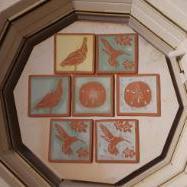


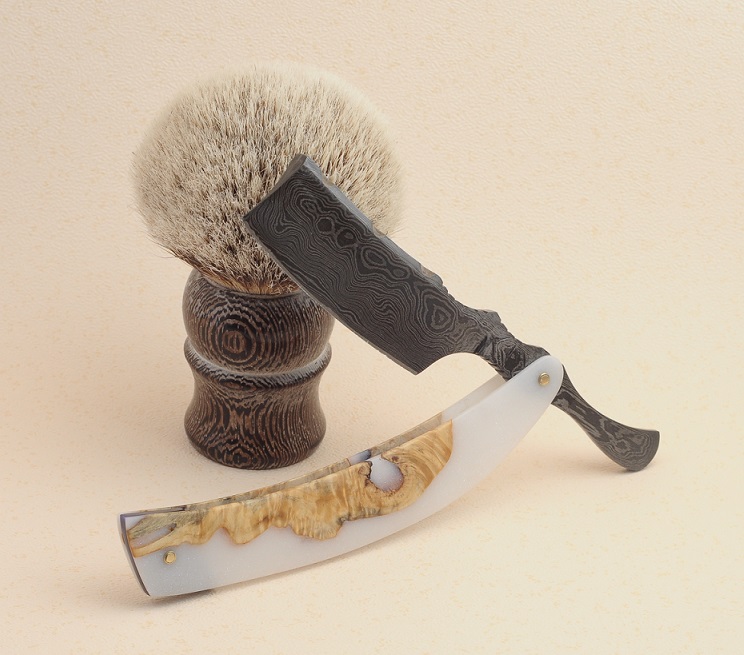
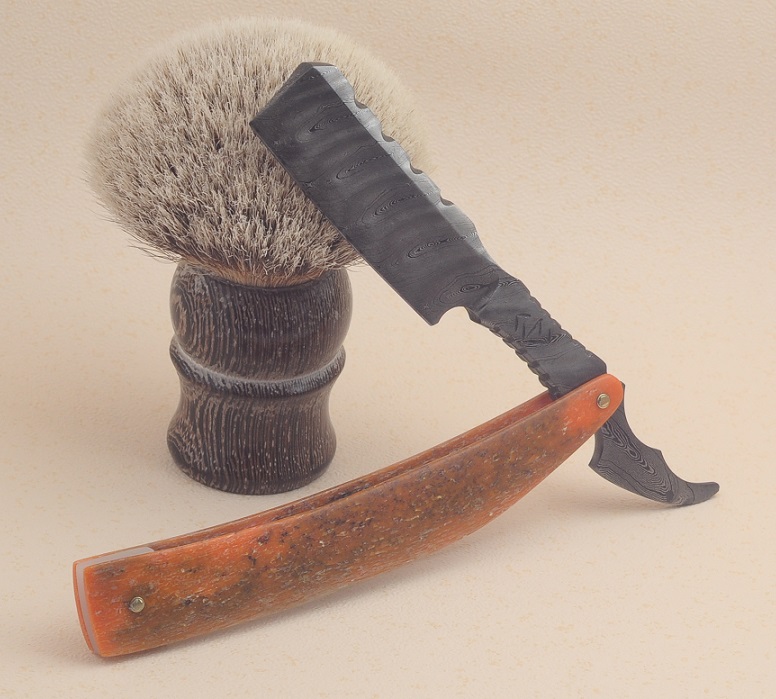
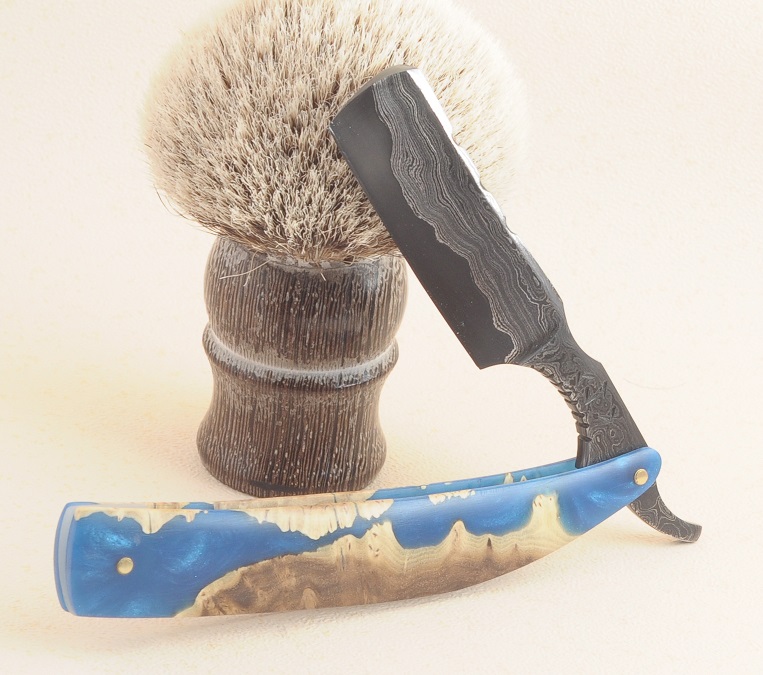
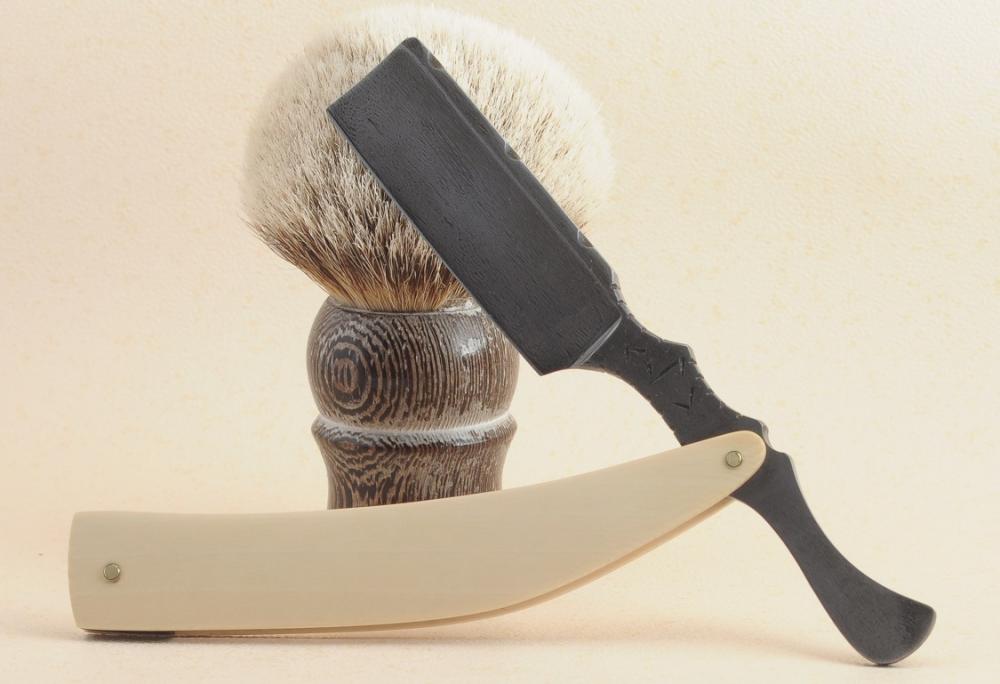
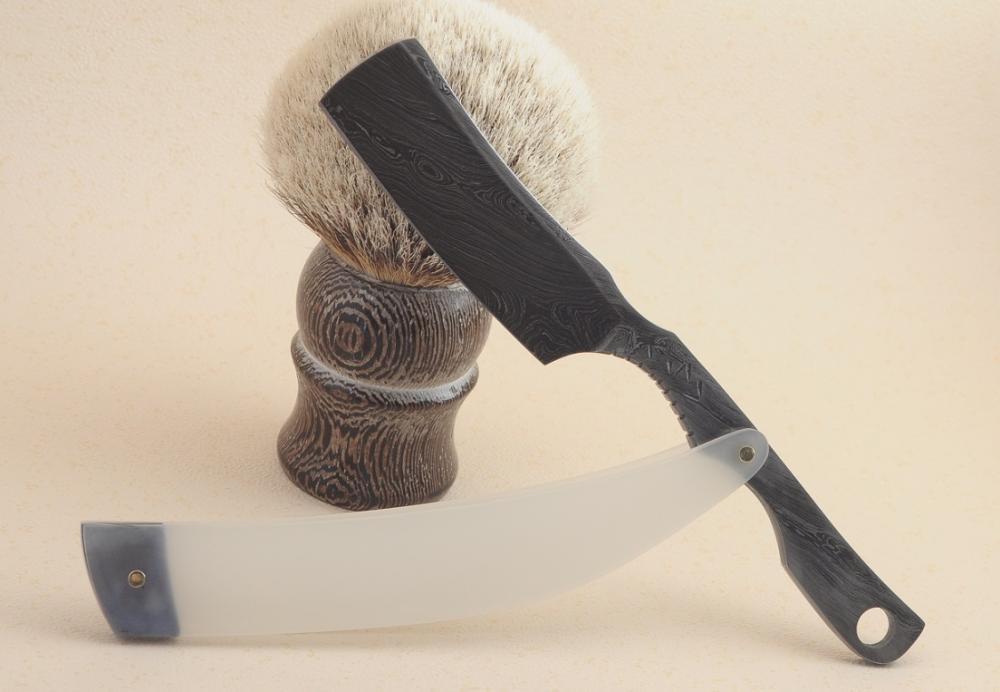
.jpg.80b20669a1dcb19cde435316b9c01659.jpg)
